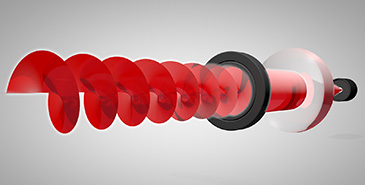Our collective Holodeck-Danger Room fantasies are one step closer to reality thanks to a new acousto-optic device described in the latest issue of the journal Optics Express. It can manipulate laser beams in near real time using nothing but sound waves.

Developed by a collaborative team of researchers from the University of Bristol and the University of Dundee, and led by Bristol’s Professor of Ultrasonics, Bruce Drinkwater, the tabletop device employs an array of 64 piezo-electric elements to generate a high-frequency wall of sound powerful enough to bend and twist any light that passes through its acoustic field. More importantly, this sound and light field can be controlled — in near real time — by the system’s command software so that as the audio output changes, so too does the light’s twisting path.
“This reconfigurability can happen extremely fast, limited only by the speed of the sound waves. The key advantage of this method is that it potentially offers very high refresh rates — millions of refreshes per second is now possible,” Drinkwater explained in a press release. “This means that in the future laser beam-based devices will be able to be reconfigured much faster than is currently possible. Previously, the fastest achieved is a few thousand refreshes per second.”
This full-magnitude spec bump could open the technology up to a host of new and unique applications. Shaped lasers already perform a number of functions for the scientific community — as optical tweezers and image stabilisers for high-powered microscopes — though currently the technology still uses physical, deformable mirrors (like the Gemini observatory’s adaptive optics but smaller).
But by controlling the lasers with sound waves, the system could easily be scaled up to people-sized applications. “The device can potentially be addressed much more quickly than existing holographic devices, such as spatial light modulators, and will also allow for much higher laser powers to be used,” Drinkwater continued. “This opens up applications such as beam shaping in laser processing of materials, or even fast and high power control of light beams for free space optical communications using orbital angular momentum to increase signal bandwidth, as shown recently by a demonstration in Vienna.”
Unfortunately, there’s no word yet on when, exactly, we’ll be getting our Star Wars-style holo-phones — but this is still an amazing breakthrough. [University of Bristol via R&D Mag]
Picture: Itana/Shutterstock
